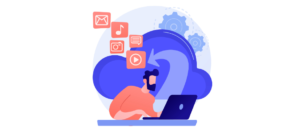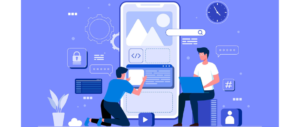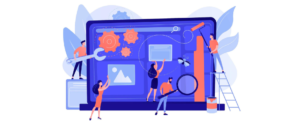
It’s no secret in the IT world that legacy systems can become redundant fairly soon and can negatively affect organizational productivity. Businesses can suffer significant losses and the entire reason behind leveraging technology gets defeated. However, enterprises do not need to be pulled down by the challenges of legacy systems indefinitely.
Legacy system modernization and migration encapsulate efficient upgrading and modernizing of an organization’s current systems. This includes improving or altering existing workflows, deploying updated features, boosting overall efficiency by streamlining systems with dynamic and expanding business demands, and then aligning them with modern competencies.
Opting for legacy modernization efforts has become a top priority for organizations, especially in the “new normal” where it’s imperative to keep the online businesses running seamlessly while ensuring exceptional customer experience. The practice also significantly enhances application security along with increasing business processing capacity. Recent figures highlight that the market size of App Modernization Services is expected to grow from $16200 mn in 2019 to $43350 mn by 2026.
So why are organizations not embracing software modernization programs more vigorously? Well, the obvious answer is that it is not a one-step or simple process. In fact, modernization demands meticulous decision-making and vision. One cannot migrate and modernize traditional systems in a single attempt due to years of user familiarity, operational dependence, and the need to retain a high volume of business data produced previously.
Following are the four most commonly encountered obstacles when organizations plan to embark on a legacy system modernization journey.
Qualms in the Face of Change
The biggest challenge of software modernization is the refusal to adapt to change. Legacy systems have been around for decades, and their users are well-versed in their operations. Modernization of such systems poses a direct threat to their years of skills and experience and on-the-job knowledge, which had proved to be enough for business operations till the present.
Additionally, leaders are often hesitant to shift to newer technology. These updates are frequently seen as disruptions to traditional business processes embedded in the organization’s approach and work culture. Selecting the right approach can be a major headache for leaders, as the journey is not straightforward.
The best way to handle such obstacles would be to highlight the advantages of modernizing systems. The right approach can be decided by comparing different methods based on factors such as the solution’s complexity, the organization’s financial condition, availability of skills, and the reasons for opting for modernization.
Understanding the long-term gains like higher user satisfaction, surviving in a challenging business environment, and benefits to business expansion can help employees and leaders embrace software modernization.
Scarcity of Relevant Skills
The non-availability of personnel with the required experience and skills to handle the complex, multi-component mainframe infrastructure is a major obstacle during the modernization journey.
Adding to these challenges is that most employees who are well-versed with legacy systems are often unavailable or perhaps retired. Further, organizations may be reluctant even to consider “touching the code” for fear of the impact changes may have. In such situations, it’s important to have a comprehensive legacy system modernization partner who has the required knowledge, resources, and clear understanding of the present legacy system.
High Costs of Modernizing Legacy Systems
Every coin has two faces, which is true even for the software modernization process. On one side, it helps eliminate grave technical and legacy issues; but on the other hand, it is pretty expensive. Due to budget constraints, many enterprise leaders are often forced to reconsider their modernization journey.
With support for legacy systems becoming scarcer, delays in deploying the latest features, and high maintenance costs, businesses need to take proactive action. Of course, it is impossible to quote and set aside the exact figure when deciding to embark on the journey, but an in-depth discussion with the legacy system modernization partner can help provide a clear picture of the budget. These partners have the resources to support you in determining the project scope and preparing estimates that could suit your budget.
Performance & Stability
When migrating to modern systems, small but significant legacy system features often may be overlooked. Further, inefficient workflows from legacy systems could become implemented within modern systems, resulting in poor performance as the older system. To overcome this challenge, it is important to upgrade the systems as part of a systematic and continuous improvement strategy. Thus, when organizations decide to outsource legacy application modernization and migration to a comprehensive software partner, they can overcome the challenges of instability and performance.
While deploying a legacy modernization solution can be complex, time-consuming, and expensive, it is beneficial for organizations in the long run. Vatsa Solutions is a leading legacy modernization partner with proven experience with expert support departments that make it the favored IT partner for customers. See how we successfully modernized a two-decades-old child support legacy system for the US government.
To learn more about how we support you during your legacy system modernization journey, get in touch at contact@vsplc.com.





